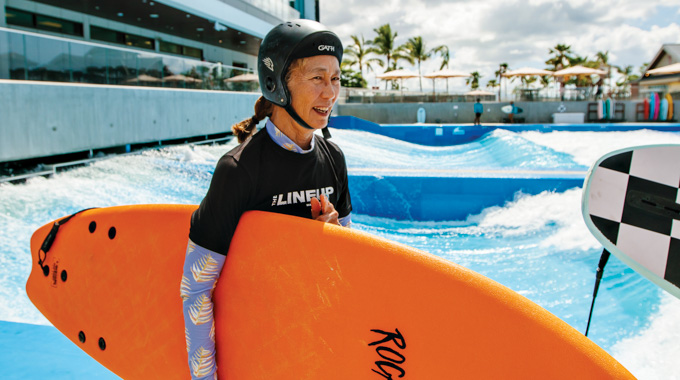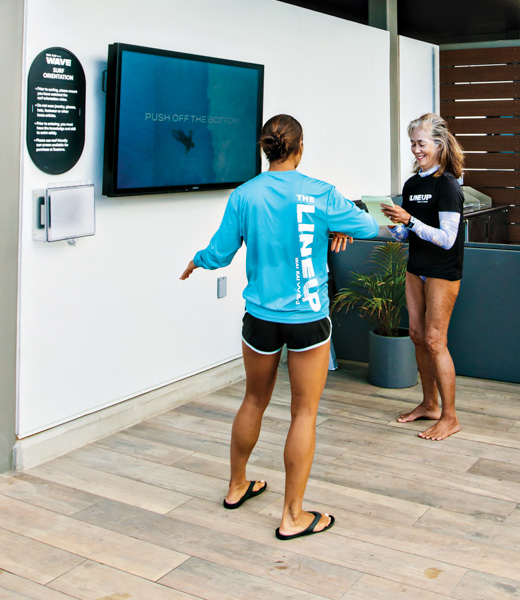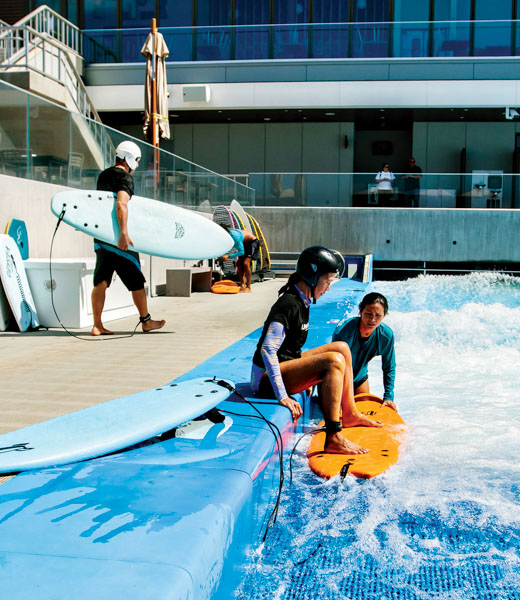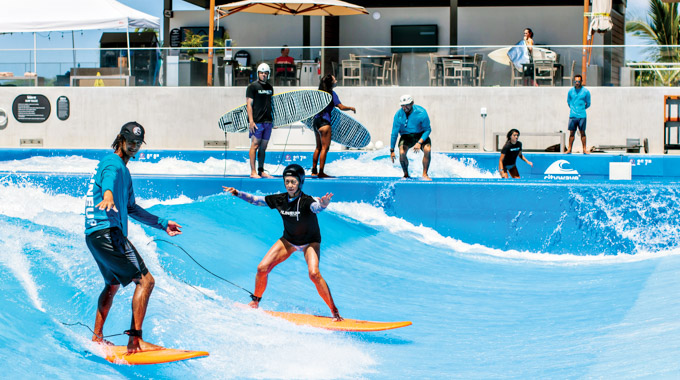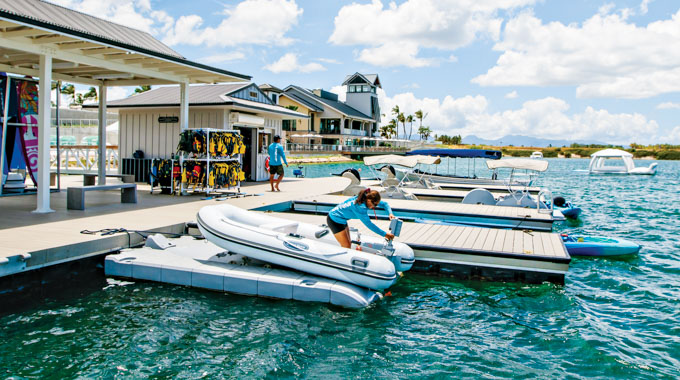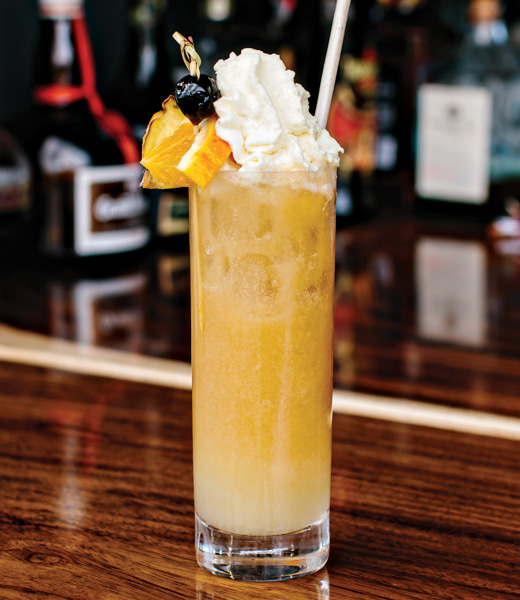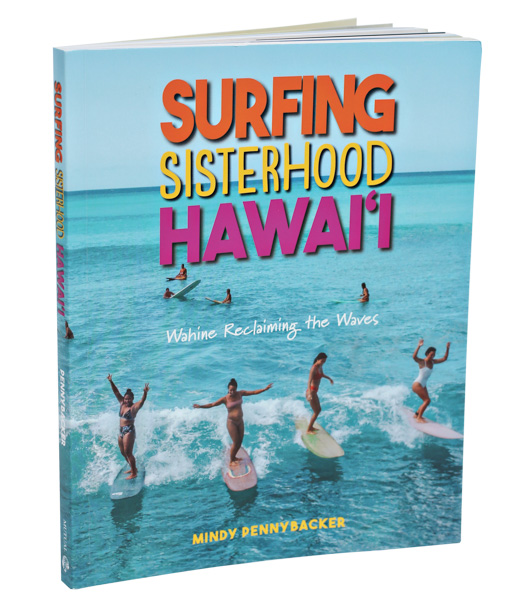Under the scorching June sun on O‘ahu’s ‘Ewa plain, the clear turquoise waters and churning swells at The LineUp at Wai Kai, Hawai‘i’s first artificial wave pool, looked cool and refreshing—but also a bit daunting—as I prepared to give it a try.
Okay, I was terrified. At the deep end of the 100-foot-wide pool, divided on this day into 30- and 65-foot lanes, industrial pumps forced water down a spillway to noisily shape a 4-foot-high wave.
To be clear, I grew up in Honolulu and have surfed ocean waves 3 times that size, but this was a different beast. For one thing, it was a fixed (or standing) wave that didn’t break, so theoretically you could ride forever, turning back and forth. For another, instead of paddling into the wave, you start out standing on your board, holding on to the edge of the pool—already on the wave, as it were.
I began by sitting on the pool’s rubber-padded concrete edge and, following instructor Ollie Fix’s directions, planted my feet in a wide surfing stance atop the soft foam deck of the round-nosed short board he held on the water’s surface. “Push down hard, especially with your back foot, and then push off,” Fix said.
I took a deep breath and pressed down with the soles of my feet. I felt the wave push back beneath my board—an entirely novel sensation. I mentally prepared myself to stand and, fingers crossed, carve a turn—or crash and burn.


